Green Action Week 2020
A guide to the theme of Sharing Community
Why is Green Action Week necessary?
We face a crisis of people and planet
Too many people do not have equal access to the goods and services we need for a decent life, and too much stress is being put on the planet – our shared home.
There is an alternative: a sustainable future for everyone on a healthy planet
This crisis is fueled by unsustainable consumption. It is a system which is not natural but has been created by people – so people can change it.
All over the world communities are demonstrating alternative methods we can live in balance between people and planet.
We can build this future through sharing community
‘Sharing community’ is the method Green Action Week is focusing on to achieve this future.
When people collaborate and share goods and services, it brings communities closer together and brings social benefits that reduce our environmental impact at the same time. The sharing community works for people and the planet.

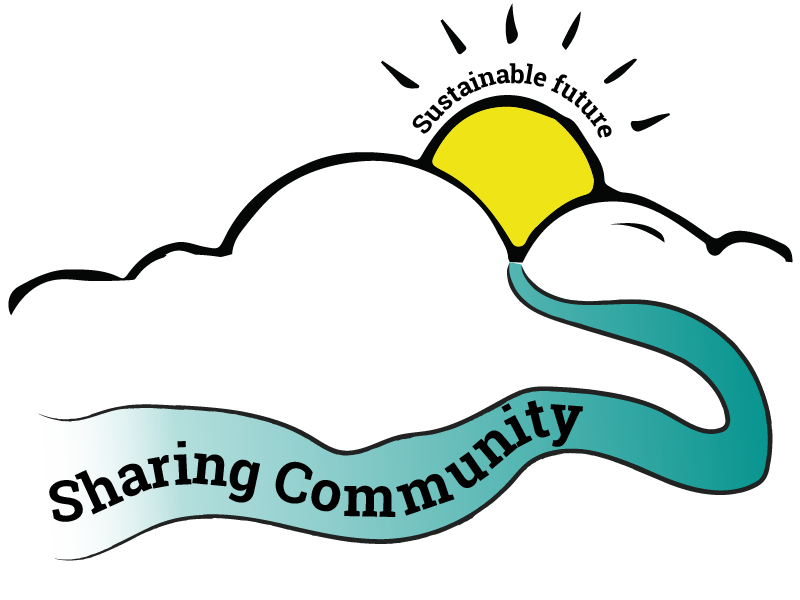
How does this fit with the Global Goals?
In 2015, world leaders agreed to 17 Global Goals (officially known as the Sustainable Development Goals or SDGs). These goals have the power to create a better world by 2030, by ending poverty, fighting inequality and addressing the urgency of climate change.
Green Action Week contributes to Goal 12: Responsible Consumption and Production – you can read more detail about Green Action Week and SDG12 here.
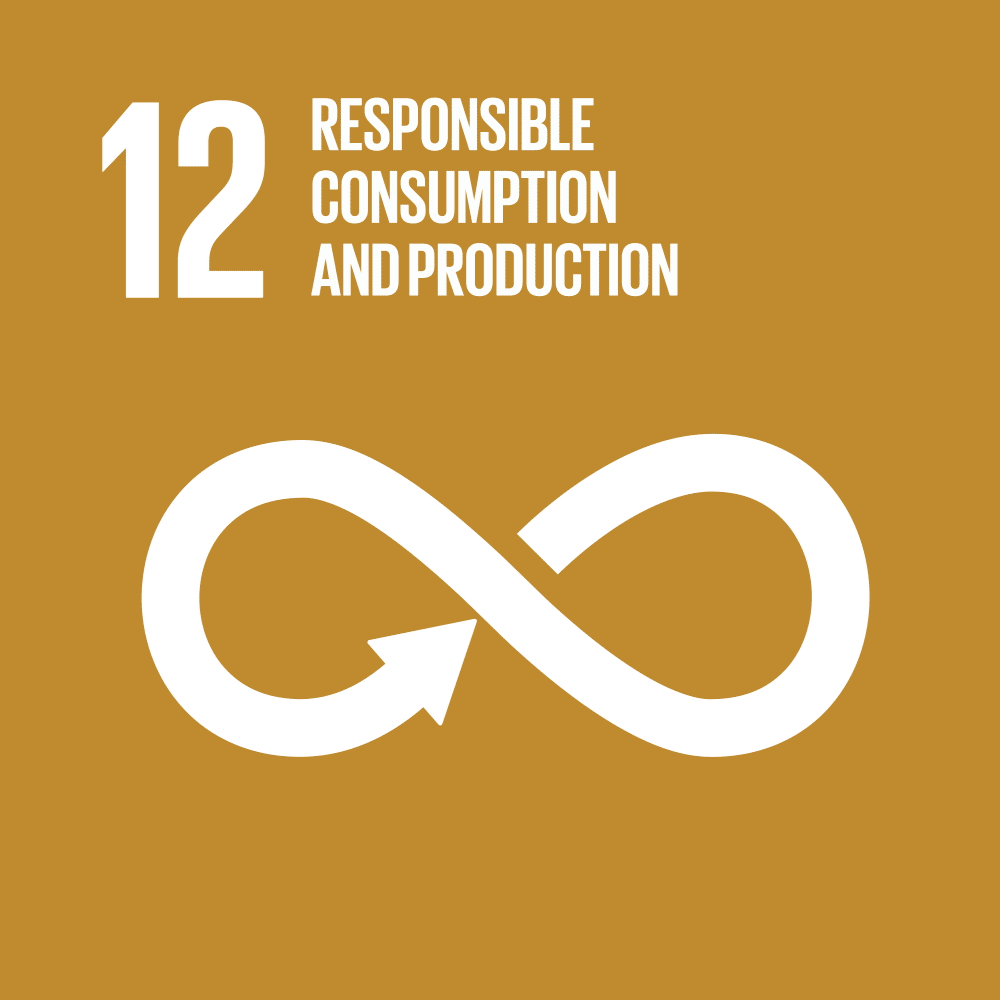
What if your group is not eligible for funding?
Green Action Week is an initiative by the Swedish Society for Nature Conservation (SSNC) and is carried out in coordination with Consumers International (CI).
If you are not a member of CI or partner of SSNC then you can still be part of the campaign even if you are not eligible for funding.
Green Action Week would welcome hearing about your sharing community plans – please fill out this form (3 short questions) and we will be in contact.


What about covid-19?
The situation with the novel coronavirus (covid-19) is changing rapidly, so first of all we want to repeat that if you have any questions, please contact Green Action Week early in the process and we intend to be flexible.
Our general advice when planning activities is to proactively adapt to the situation caused by the virus, rather than postpone, cancel, or assume it will not affect you.
In the email you have received from Consumers International and SSNC you should have the link to a support document with more advice specifically for planning with covid-19 in mind.
What does Sharing Community look like?
Change the system, not just clean up after it.
In Brazil, local groups used sharing to link together the whole consumer chain: food grown in seed-sharing schemes being sold in a co-operative cafe, where visitors were taught sewing techniques to fix old clothes into reusable bags. In the cafe, reusable bags were free to be borrowed by customers, and customers brought in unneeded toys to share with schoolchildren to get the next generation thinking about what they could share.
Speaking a global truth in our local languages
In India, the Gujarati phrase આપ-લે નો ઓટલો (‘give and take’) was used on the streets and in the media. On ‘Ghandhi Jayanti’ (Mahatma Ghandhi’s birthday), volunteers took to the streets of Berhampur, to remind people of a proud Indian tradition of the “environmental, economic, social and cultural benefits of sharing community.”

Building stronger community relationships
In Fiji, local seamstresses and weavers were invited to share their skills in how to upcycle old clothing and fabric cast-offs that participants brought along to share – and turn them into reusable bags that could be used by the community. This was done both to protect their marine ecosystem from plastic bags and to bring new respect to older skills which could provide a source of sustainable income.
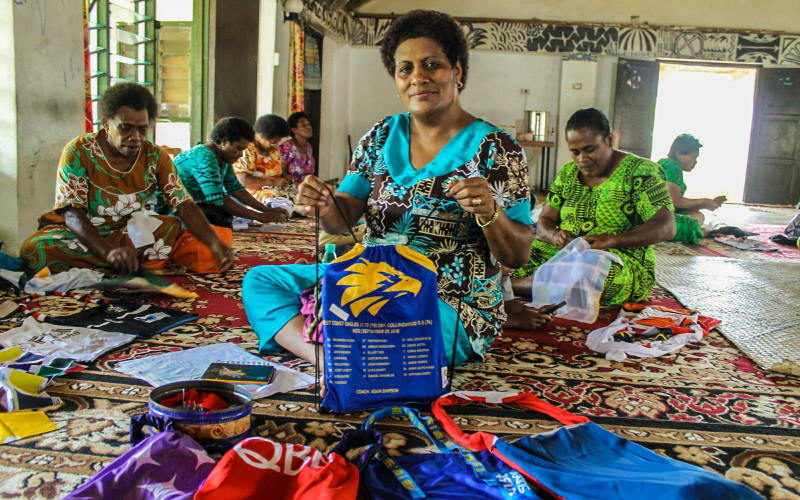
Bringing back local cultures of sharing
In the Philippines, ‘Bayanihan’ (a tradition of communal unity and sharing amongst rural people) is threatened by the prevention of seed-sharing and farmers becoming dependent on corporations’ chemicals and technology, rather than each other. Local groups are creating seed banks and trial farms to share seeds, technological equipment, and community support so they can grow safe, affordable and sustainable food for everyone.
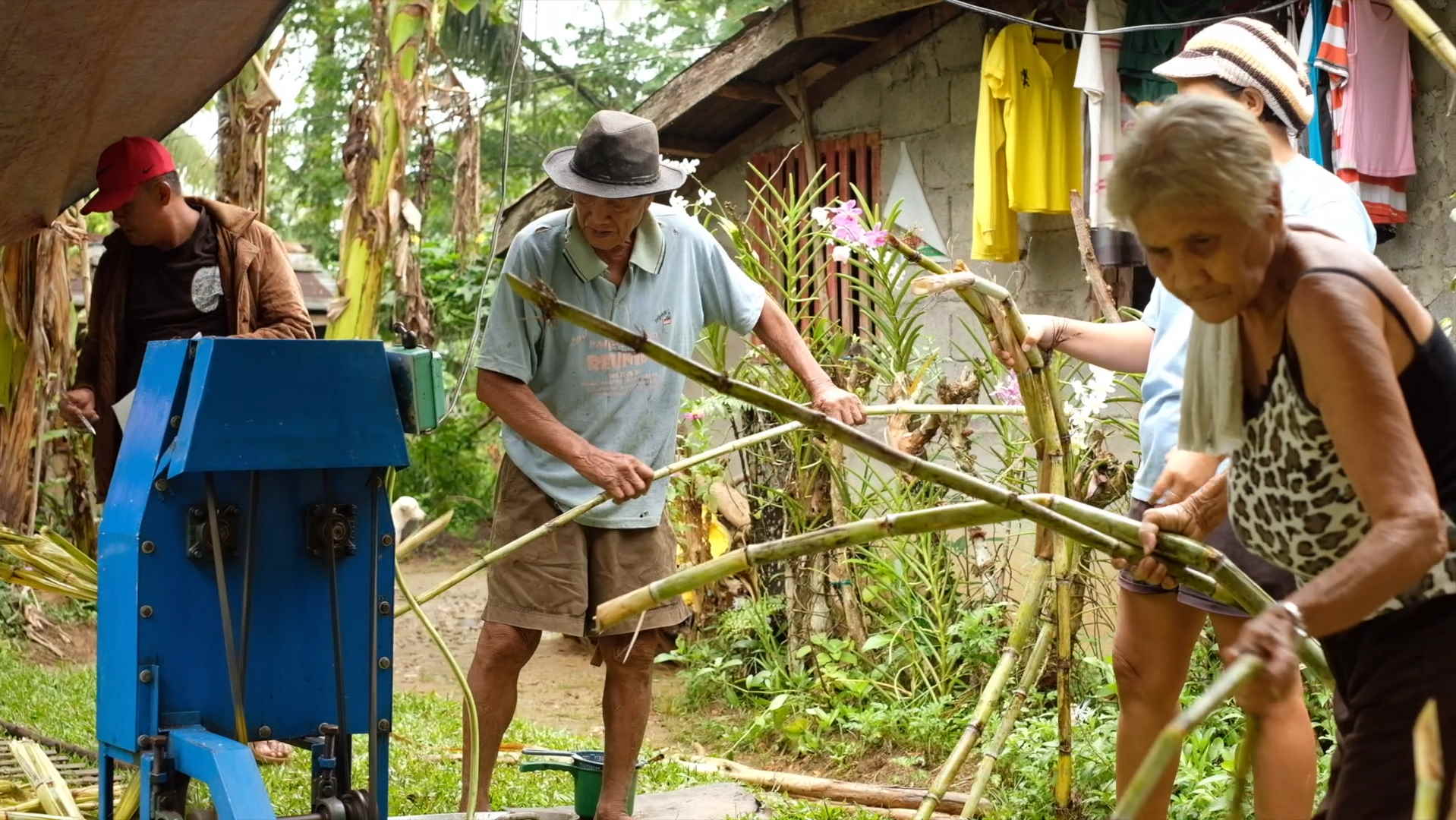
Want more Sharing Community ideas?
Green Action Week is about exploring methods for sustainable consumption. No one has all the answers, participants have been invited to inspire each other by experimenting with new ideas and over the past two years a genuinely global exchange has happened between 50+ groups in 35 countries. You can see more examples of what participants did for the ‘sharing community’ theme in 2018 and 2019.
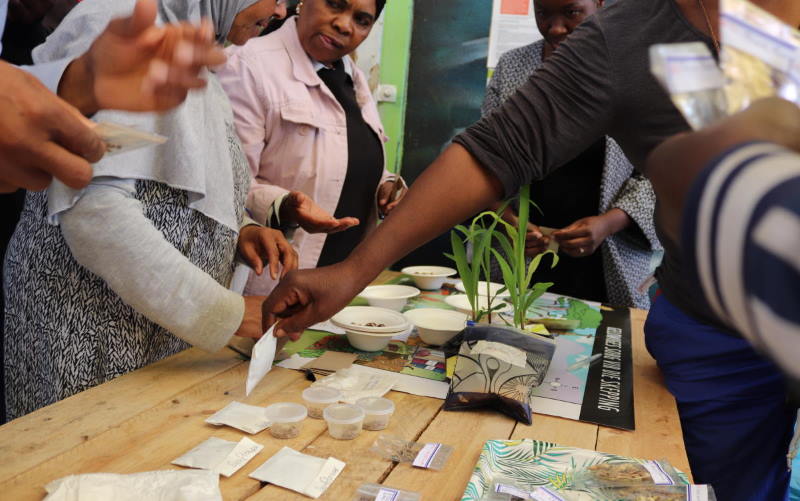
Share seeds, plants, and encourage plant diversity, like SAFCEI did in South Africa.
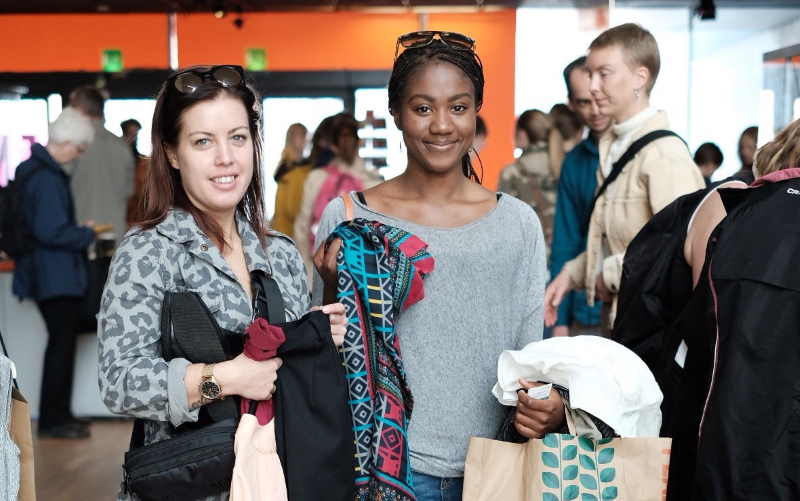
Set up clothes swaps where people bring and repair together like SSNC in Sweden.
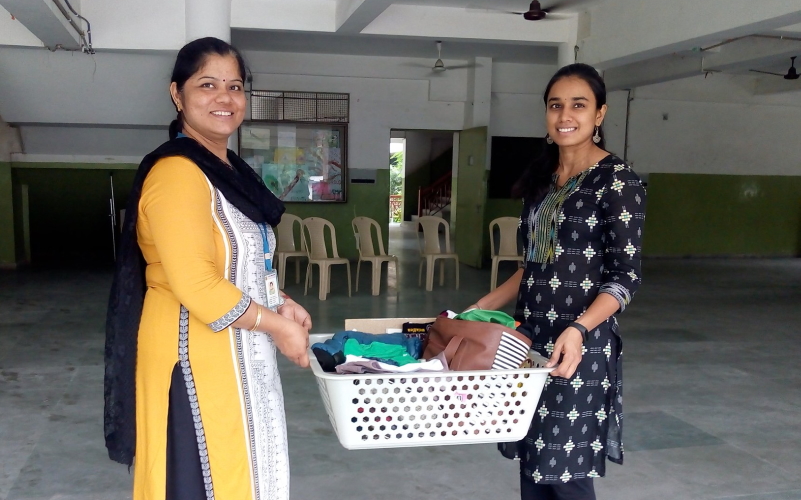
Create spots for location-specific sharing, like CERC-ENVIS in India did at a school.
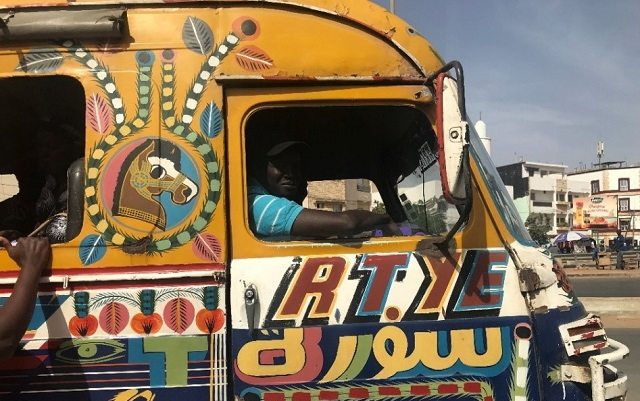
Support community transport or ride-sharing schemes to help people and tackle pollution.

Help people make their own sustainable ingredients and recipes like LKY in Indonesia.

Set up social media groups for swapping items and skills like Consumers Lebanon.
Remember: we are trying to change the system of unsustainable consumption, not just clean up one part of it. Don’t start by simply copying one of these activities, use the steps below to decide what is most relevant to your community and design activities that fit you best.
5-steps to a Sharing Community campaign
1. Find our vision
Explain what will be different in our community if we are successful.
Can we do it in under 40 words?
- How will you know if you're not needed anymore?
- Don't just imagine a perfect society from above - can you imagine what it looks like in the life of a single person?
- Does this tackle the joint crisis of people and planet?

2. Understand the obstacles
What obstacles are preventing our vision from happening? What are the real causes of these obstacles?
- If our obstacles are mostly 'symptoms' or 'patterns', what could be the 'roots' or 'culture' underneath them?
- If our obstacles are mostly 'roots' or 'culture', can we identify the 'patterns' or 'symptoms' that come from them - to make them feel more real?
- If this obstacle was solved, would our vision be much more likely to come true?
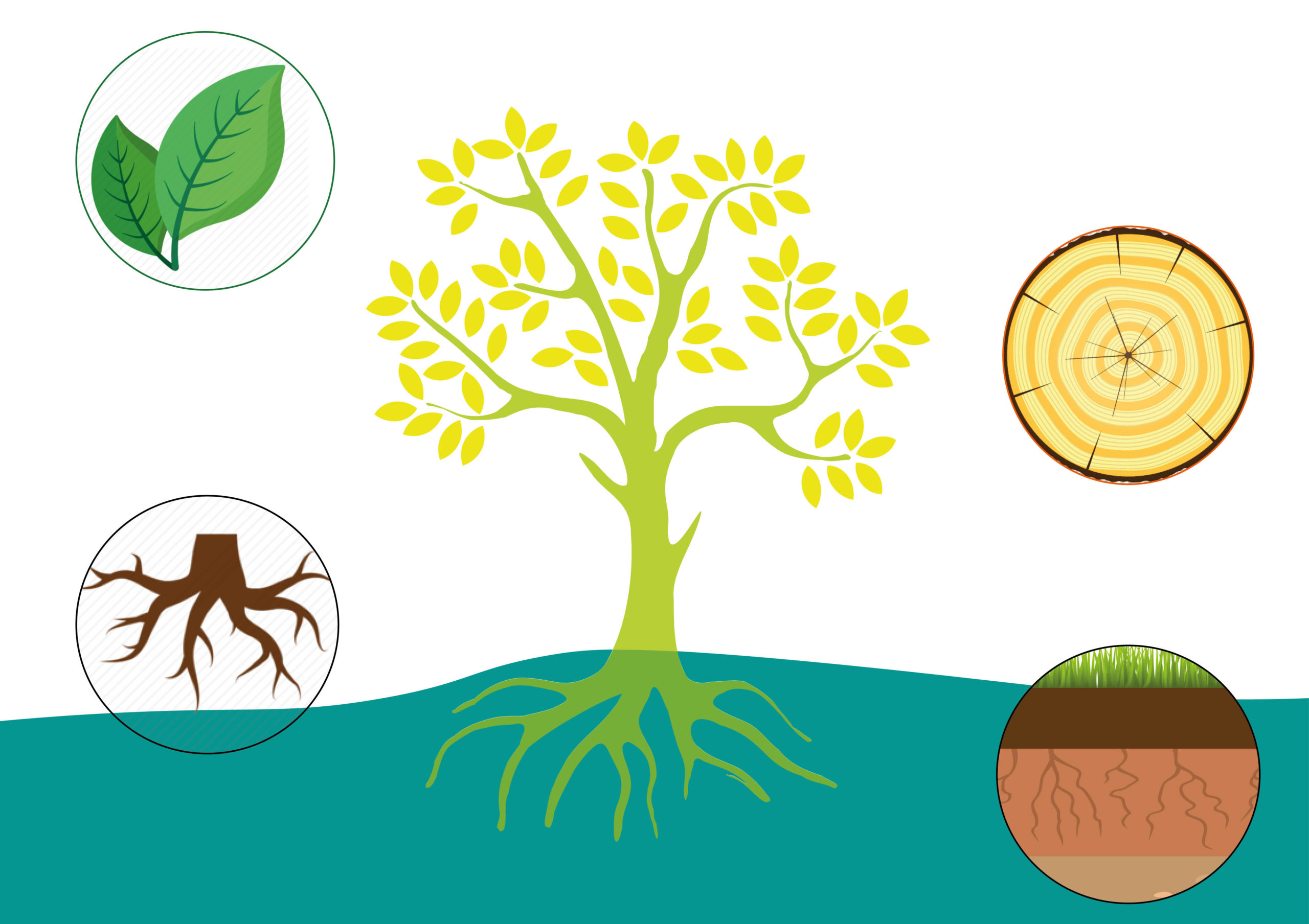

Symptoms: What can you touch, feel, or see that is caused by the problem?
Example: Empty fuel cannisters are littered everywhere – and people are spending a lot of money on fuel.

Patterns: How has this changed over time? What has changed with it?
Example: The fuel prices and litter went up, more people moving into the area.

Roots: What in society, politics, the economy, or our behaviour is causing the pattern?
Example: Government subsidises fuel but not public transport. People need to commute a long way to their jobs.

Culture: What beliefs or assumptions make up the environment for these roots to grow?
Example: “You should take pride in owning your own vehicle”.
“You are responsible for yourself.”
3. Decide our solutions and audiences
What solutions could tackle the obstacles we identified? Who do we need to reach to make them happen?
- Are our solutions big enough to match the obstacle?
- Are we just naming categories of audiences (like 'decision makers') or can we go deeper?
- Are we just choosing audiences we are already comfortable with - or do we need to look at different audiences?
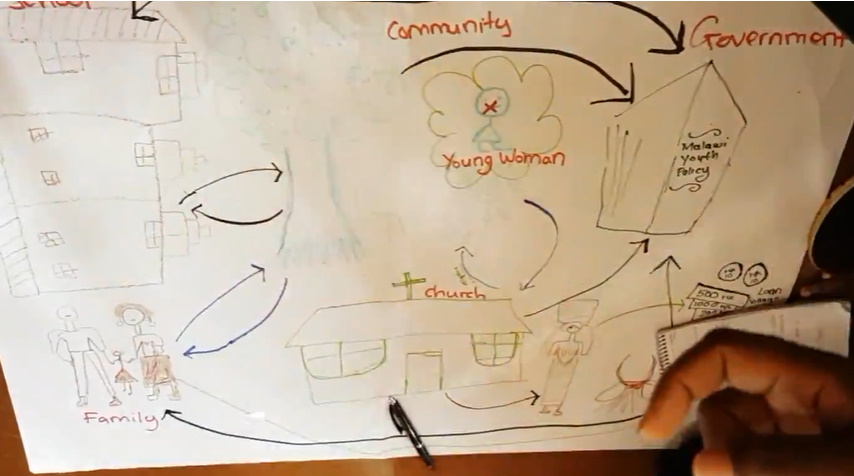
4. Plan our activities
What will we actually do to make a sharing community happen?
- Are we just listing activities we have done before, or which are easy to do?
- Have we thought about who else (partners, allies, spokespeople, etc) we will need to carry this out?
- Are we staying true to our vision, obstacles, and solutions?


If you would prefer to download and go through these steps yourself offline, we have created downloadable resources:
- A facilitator’s guide to help you and your group think through your vision, obstacles, solution, and activities – with suggested exercises. Download here.
- Presentation slides with a video, examples and diagrams to accompany the facilitator’s guide. Download here.
- A planning poster with tips which will help you create a large visual guide of your vision, obstacles, solution and activites which you can put on your wall and helps the whole team stay focused. Download here.
5. Get help to finalise plans
Last year, Green Action Week participants fed back that you appreciated one-to-one communications support, and you would like even more support before the planning submission deadline.
- We will have a group webinar where we can go through the planning process together, you can hear more examples of great Sharing Community campaign activities, and we can answer any questions. Members of Consumers International and partners of SSNC will receive the times and link by email.
- You can book a 30-min call (over Skype, WhatsApp, or another video call software) to get one-to-one support on your plans. Members of Consumers International and partners of SSNC will receive the booking link by email.
If you are not eligible to apply for Green Action Week funding, you can still be part of the campaign.
We would love to be in contact with you about your activities by filling out this form (very short, only 3 questions).

If you are applying to take part in Green Action Week as a member of Consumers International – you should have received an email. If not, you can find more information on the Consumers International website.

If you are applying to take part in Green Action Week as a partner of SSNC – you should have received an email. If not, you can contact info@greenactionweek.org
What should I watch out for?
Previous participants have fed back that it is sometimes hard to understand what is a sharing community campaign – and what isn’t. Below are some tips that hopefully make it clearer how to make your planning application stronger.
Awareness must link to action
‘Sharing knowledge or skills’ through trainings or awareness campaigns is not, by itself, relevant to our theme. We must go further to use that knowledge or skills to actually change behaviour or systems through sharing and collaboration of goods and/or services.
- Projects with sharing/collaboration of goods and/or services.
- Projects that only involve 'sharing knowledge/skills'.
Community, not charity
‘Sharing what you have with those who need it’ should not just be a one-off act of giving charity from rich to poor, but should be an exchange between people. So everyone has better access to goods and services in a way that is environmentally sustainable.
- Activities where everyone can contribute in some way.
- Activities where some people only give and others only receive.
Sharing Community is the method as well as the objective
‘Sharing ideas’ about activities like organic farming, by itself, is not relevant enough to this theme. Our campaigns need to use sharing and collaboration of goods and services as the method of the activities – it is the best way to prove that the sharing community can work.
- Campaigns that prove sharing community works - by doing it.
- Campaigns which only talk about an idea of sharing community.